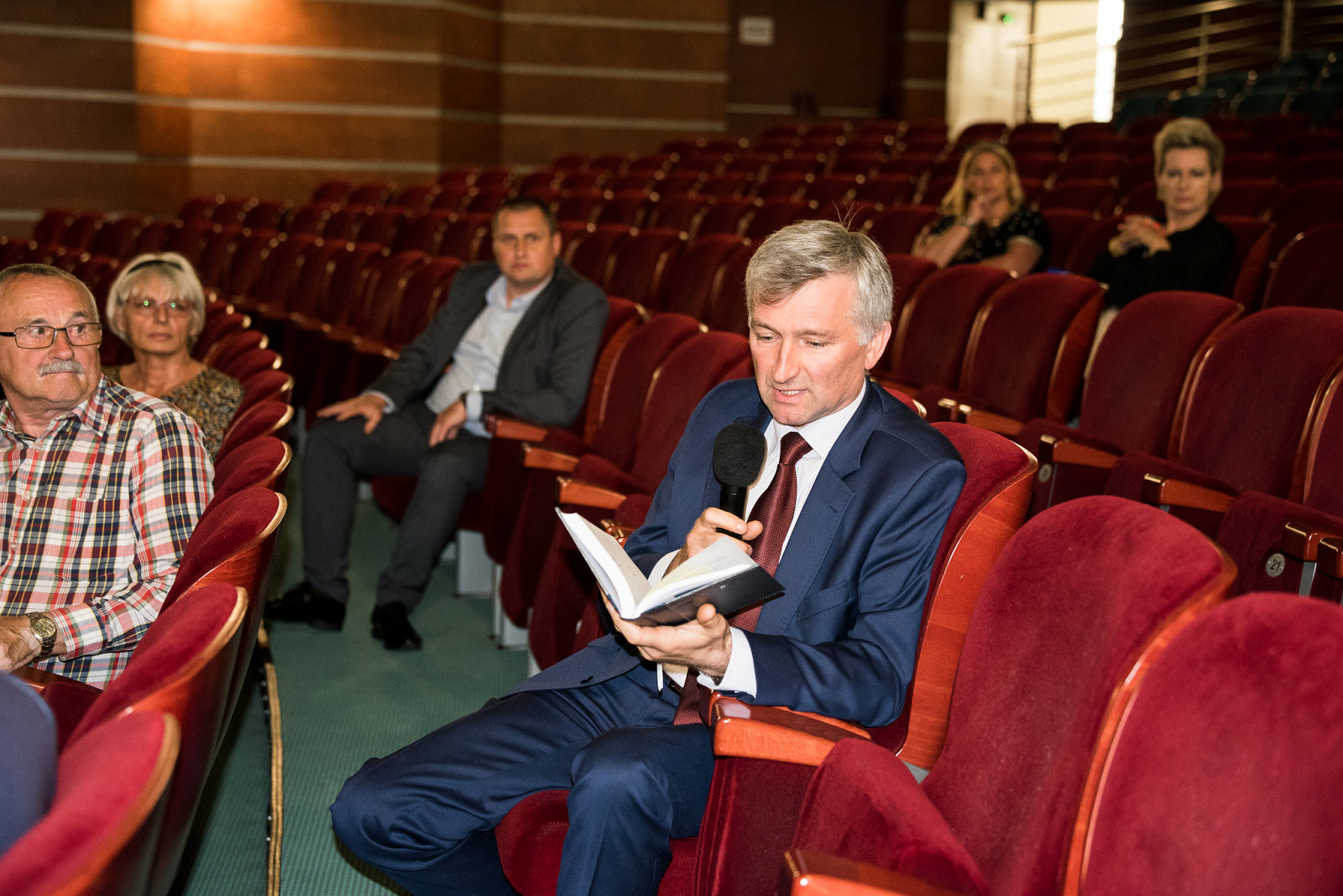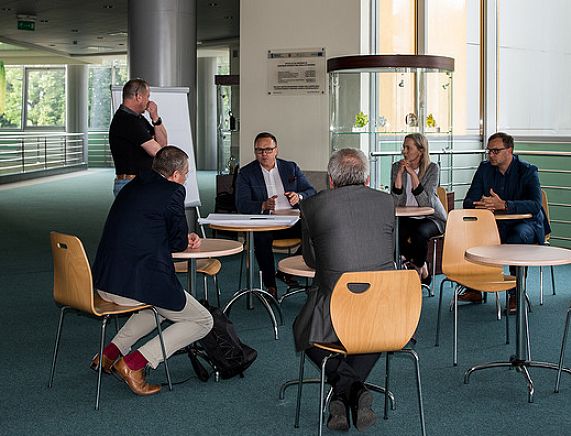The next stage of work on the preparation of the Local Development Plan and Institutional Development Plan within the framework of the project entitled ‘We Create + We Develop + We Activate+ We Motivate + We Stimulate + We Change = KROSNO’ has been completed. Last week (24th – 25th June) meetings of the City Team and the Krosno Development Council were held on the diagnosis of the city development stage.
The most important conclusions from the diagnosis of Krosno were presented by its authors - Dr. Hubert Kotarski and Dr. Krzysztof Piróg of the IBERiS Institute (Institute for Market and Social Evaluation Research). The diagnosis was developed in the following problem areas: environmental, social, economic, spatial, financing of city development, cultural, smart city management. Data from public statistics - the Local Data Bank of the Central Statistical Office - was used, as well as tools created by the Association of Polish Cities - the Local Development Monitor and an in-depth analysis tool containing data on the economic activity of residents, made available by the Ministry of Finance from the POLTAX system. In addition, the diagnosis takes into account the results of surveys of young people from Krosno high schools and students of the Carpathian State University.
In order to determine Krosno's competitive position compared to similar cities, a comparison group was defined, including cities with county rights similar in terms of population, which have lost their status as the provincial capital, located in eastern and southern Poland, on the eastern side of the Vistula River. These are: Tarnobrzeg and Przemyśl (Subcarpathian Voivodeship), Nowy Sącz (Lesser Poland Voivodeship), Chelm, Zamosc, Biala Podlaska (Lublin Voivodeship) and Suwalki (Podlaskie Voivodeship).
What are the most important conclusions from the diagnosis?
- Krosno, like most medium-sized cities in Poland, has demographic problems: a declining population, an increase in the subpopulation of people of post-working age, with a decline in the number of people of pre-working age, an outflow of residents to suburbs (municipalities directly adjacent to Krosno), a stabilized influx of residents into the city, mainly due to investments in the housing market – informs dr Hubert Kotarski. - On the other hand, a very strong point of the city is the economic dimension - a constant and remaining for many years at a high level number of business entities registered in the Statistical Identification Register per 1,000 residents, a high and steadily increasing level of local government units’ income from participation in BP revenues from PIT and CIT per 1,000 people aged 18 and over, a high level of the average amount of investment expenditures per capita, a very low level of unemployment. However, there are also some surprises in this dimension, such as the low percentage of people employed in services, or the low level of the ratio of the number of businesses operating in the financial services sector per 1,000 registered businesses. The analysis of statistical data also shows that Krosno is characterized by a relatively low rate of the share of publicly accessible green areas in the total area of the city - parks, greens, neighborhood green areas – adds dr Hubert Kotarski.
Institutional development in Krosno is also an important aspect addressed by the project.
- Ensuring an adequate level of local development is not possible without ensuring an adequate level of institutional development, that is, an efficient and effective local government administration. An administration capable of thinking and acting strategically, providing high quality services, open to the needs of residents and cooperating with residents, caring for the professional development of its employees and managing the city using modern methods and tools. These are very important elements of the created Institutional Development Plan for Krosno - emphasizes dr Krzysztof Piróg.
To download: Krosno diagnosis presentation

From left: dr Krzysztof Piróg and dr Hubert Kotarski
The City Team worked in workshop groups to analyze the city's strengths and weaknesses in the economic and institutional dimensions, and conducted an analysis of the factors that cause the attraction and exodus of residents.
The Krosno Development Council also discussed topics related to the city's diagnosis, demographics and improving the quality of life. Special attention was paid to the issues of the outflow of young residents, suburbanization and housing policy. The need to create new green areas that are attractive and accessible to residents was pointed out. The Council also touched on the implementation of smart city solutions in the city.
The need to create an attractive city offer aimed at different groups of residents, tailored to their needs (e.g., families with children, the young, seniors) was emphasized.
The impact of the economic crisis caused by the COVID-19 pandemic on the city was also highlighted. Many industries are currently experiencing difficult times, including the aviation, automotive and furniture sectors, which are important for Podkarpackie. In view of the expected problems of economic entities, countering the effects of the crisis will be an important challenge for the coming years.

Piotr Wietecha, president of Wietpol Aerospace, member of the Krosno Development Council
- The project, which we are preparing in close cooperation with representatives of residents, entrepreneurs, public institutions and NGOs, will cover many aspects related to improving the quality of life in Krosno, informs Dr. Tomasz Soliński, deputy mayor. - Ahead of us are the next meetings of the Municipal Team and the Krosno Development Council, dedicated to developing solutions in response to the identified problems and development challenges of the city. The results of the current work, especially regarding the in-depth diagnostic part, will also be used in the process of creating a new strategy for the city's development, which we are already thinking about, the deputy mayor adds.



















![herb.png [21.51 KB]](https://krosno.pl/storage/image/core_files/2020/9/16/3c5221ac49d04b697c0f0dda11ca7266/png/umkrosno/preview/herb.png)